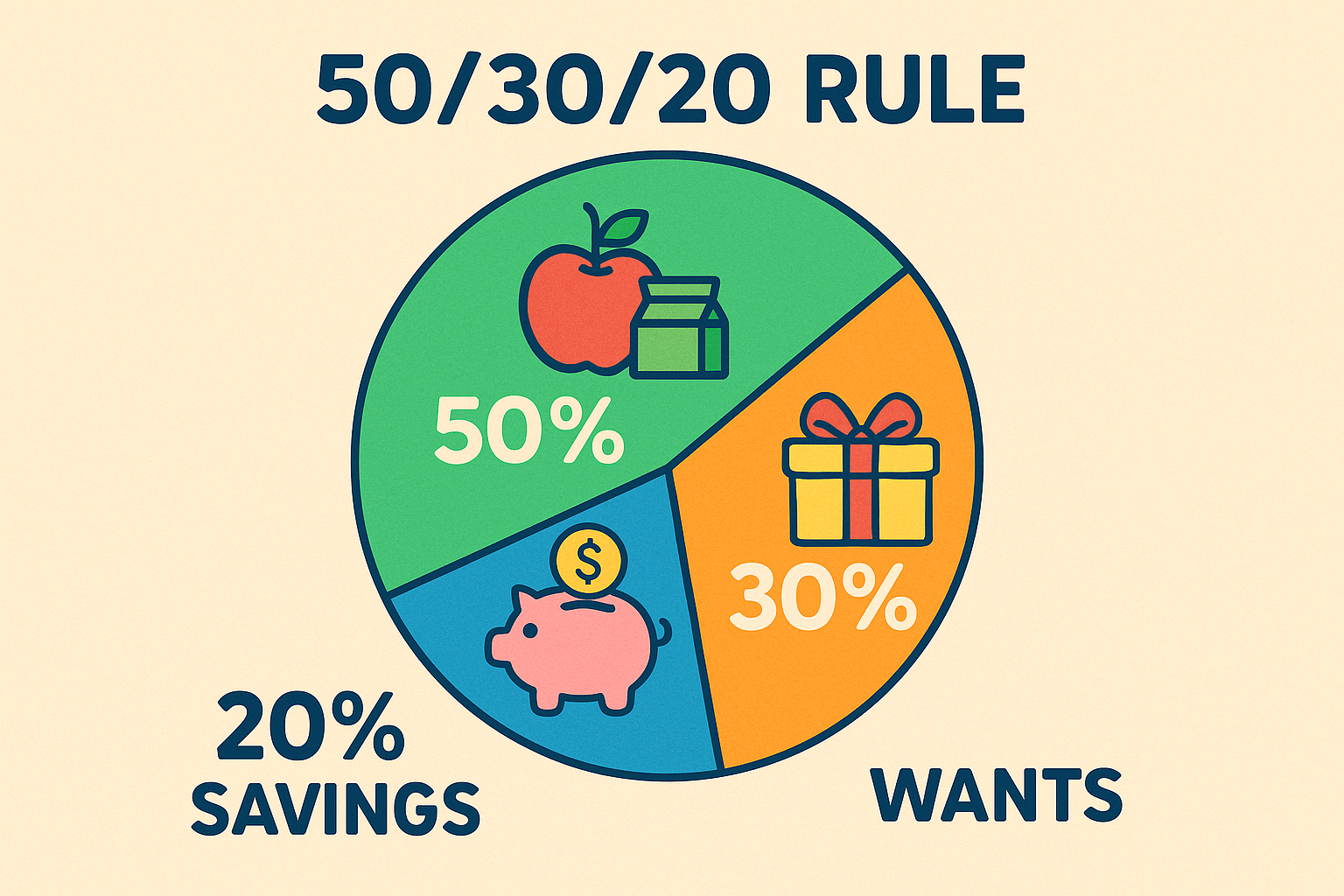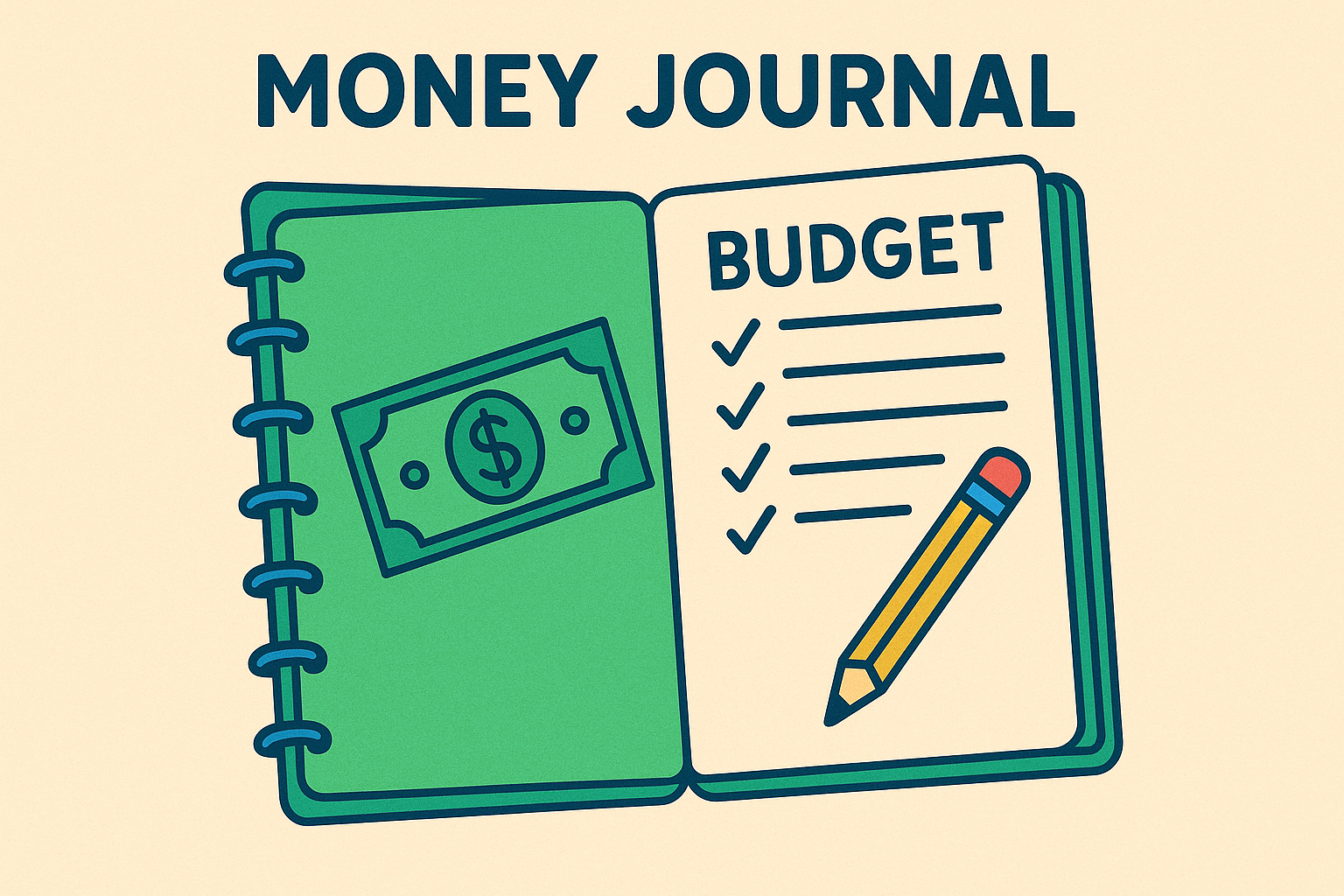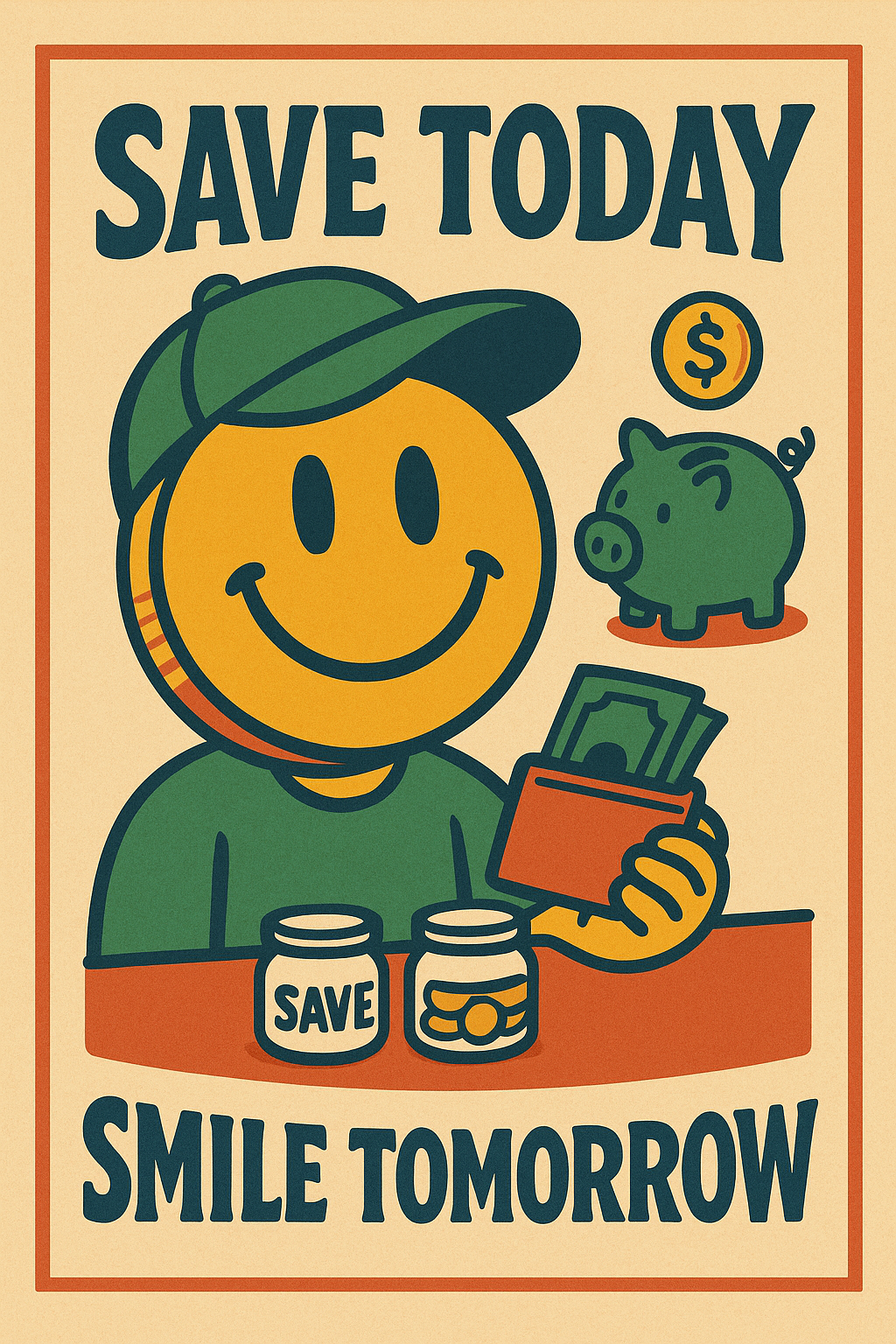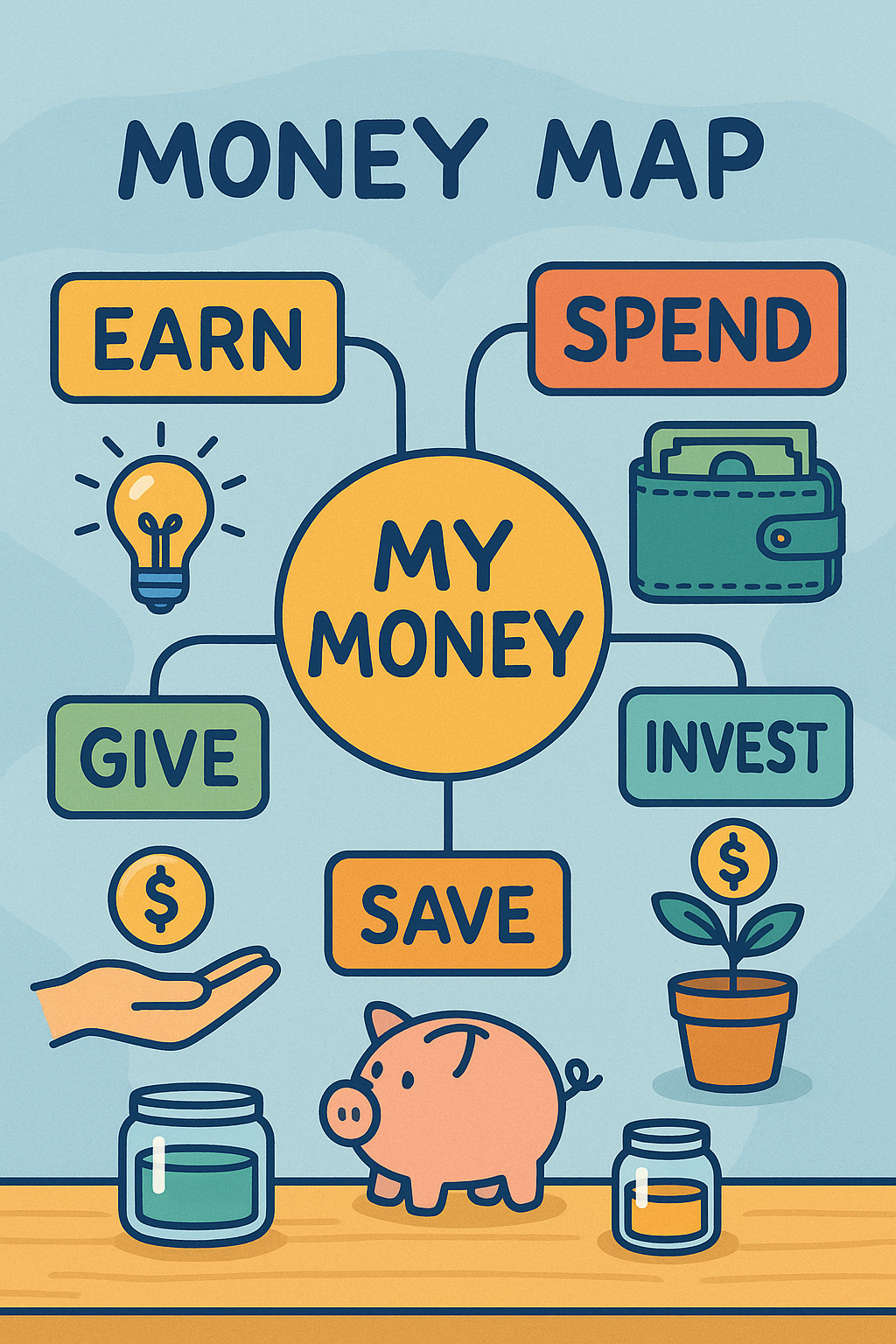💰 Money Management Basics
“It’s not how much money you make, but how well you manage what you have.”
Welcome back!
Now that you understand what a business is, it’s time to focus on you — and your money.
Whether it’s your allowance, part-time income, or gift money, learning to manage it is a life-changing skill.
🧠 What Is Money Management?
Money management means making a plan for how to:
- earn,
- spend,
- save,
- and grow your money.
It’s like being the CEO of your own wallet.
Even small amounts count — if you manage $10 wisely, you’ll be ready to manage $1000 later.

Simple visual of the 3-jar method: Save, Spend, and Share — a fun way to manage pocket money.
⚖️ Needs vs Wants
Understanding this difference is the foundation of smart spending.
| Category | Examples | Why it matters |
|---|---|---|
| Needs | Food, water, clothes, internet for school, transportation | You can’t live or study properly without these |
| Wants | Fancy shoes, new headphones, snacks, games, subscriptions | Nice to have — but not essential |
💡 Tip: Before every purchase, ask:
“Do I need this — or just want it?”
Even adults forget this sometimes!
🎯 Real-Life Example
Imagine you get $40 per month as pocket money.
You could:
- Spend $20 on snacks and entertainment,
- Save $10 for something bigger (like a school trip),
- And donate $5 to a cause you care about.
That leaves $5 as your safety net — your mini emergency fund.
You’re not just spending money — you’re learning control and purpose.

The 50/30/20 rule — a simple way to divide your money between needs, wants, and savings.
🧮 The 50/30/20 Rule (Simplified for Students)
This is a classic money management idea — adjusted for your age.
| Purpose | % of your money | Example |
|---|---|---|
| 🧾 Needs | 50% | Transport, meals, school supplies |
| 🎮 Wants | 30% | Movies, small treats |
| 💰 Savings | 20% | Future goals or emergencies |
You can adjust this rule to fit your reality.
The point is to plan ahead instead of reacting.
📱 Tracking Your Money
You can’t manage what you don’t measure.
Start tracking your money — on paper, in an app, or even in a simple spreadsheet.
Try writing this down for one week:
| Day | Income | Spending | What For? | Feeling |
|---|---|---|---|---|
| Monday | $5 | $3 | Snack | 😊 Happy |
| Tuesday | — | $2 | Bus | 😐 Normal |
| Wednesday | — | $0 | Stayed home | 😎 Proud |
Seeing your spending patterns helps you understand yourself — and your habits.

Keeping a Money Journal helps track your daily spending and understand your habits.
💡 Smart Saving Tips
- Set a goal. Don’t just “save money” — decide what for.
→ e.g., new bike, concert ticket, or your first investment. - Name your jars. “Fun,” “Future,” “Give.” It’s easier to stick to goals when money has a purpose.
- Save first, not last. When you get money, save before you spend — like paying yourself first.
- Use challenges. Try “No Spend Weekends” or “Save $1 every day for 30 days.”
🧠 Real Example: Alex’s Choice
Alex, a 17-year-old, wanted new sneakers. They cost $80.
He earned $10/week walking dogs.
At first, he thought it’d take forever. But he started saving $8/week.
In 10 weeks — boom, he bought the sneakers.
He realized saving gave him freedom — not limits.
Every time you save, you tell your future self: “I got you.”

“Save today, smile tomorrow” — every coin saved today builds your future freedom.
🧩 Mini-Exercise: “My Money Map”
Take a blank page and divide it into 3 zones:
- Inflow – where money comes from (allowance, small jobs, gifts).
- Outflow – where money goes (food, hobbies, online purchases).
- Goals – what you’re saving for.
Then draw arrows between them — make it visual, colorful, personal.
You’ll literally see how your money flows!
🧭 Why Money Management Matters
Good money management helps you:
- Feel more in control of your life,
- Avoid unnecessary stress or debt,
- Build confidence for future independence,
- Prepare for the next steps in business — where managing money for others matters too!
📚 Summary
| Concept | Meaning |
|---|---|
| Money management | Planning how to earn, spend, save, and share money |
| Needs | Essentials you truly require |
| Wants | Non-essential but enjoyable things |
| Savings | Money you keep for the future |
| Budget | Your personal money plan |
🏆 Reflection Badge: Money Master
Complete this lesson and create your “Money Map” to earn the Money Master Badge.
🚀 What’s Next?
Now that you know how to manage your personal money, it’s time to build a budget like a pro —
in Lesson 3: Budgeting for Teens →

A “Money Map” shows where your money comes from, where it goes, and what you’re saving for.
📝 Try this today
Track every expense for 24 hours.
Even $1 snacks count.
Split this week’s money into three jars: Save, Spend, Share.
Write a one-sentence money goal for this month.
Lesson Progress
Module: foundations · +0% upon completion